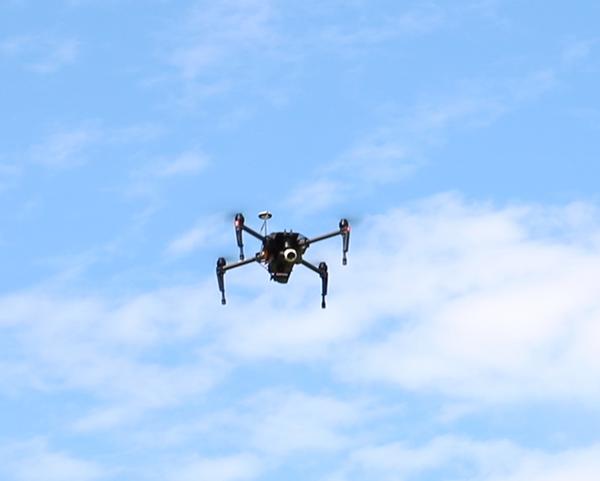
Helene: SBC to Host Free Storm Tax Webinar for WNC Farmers
On Thursday, April 3rd, 2025 from 6:00 p.m. to 7:30 p.m., the Small Business Center at Mayland Community College …


El inglés es el idioma de control de esta página. En la medida en que haya algún conflicto entre la traducción al inglés y la traducción, el inglés prevalece.
Al hacer clic en el enlace de traducción se activa un servicio de traducción gratuito para convertir la página al español. Al igual que con cualquier traducción por Internet, la conversión no es sensible al contexto y puede que no traduzca el texto en su significado original. NC State Extension no garantiza la exactitud del texto traducido. Por favor, tenga en cuenta que algunas aplicaciones y/o servicios pueden no funcionar como se espera cuando se traducen.
Inglês é o idioma de controle desta página. Na medida que haja algum conflito entre o texto original em Inglês e a tradução, o Inglês prevalece.
Ao clicar no link de tradução, um serviço gratuito de tradução será ativado para converter a página para o Português. Como em qualquer tradução pela internet, a conversão não é sensivel ao contexto e pode não ocorrer a tradução para o significado orginal. O serviço de Extensão da Carolina do Norte (NC State Extension) não garante a exatidão do texto traduzido. Por favor, observe que algumas funções ou serviços podem não funcionar como esperado após a tradução.
English is the controlling language of this page. To the extent there is any conflict between the English text and the translation, English controls.
Clicking on the translation link activates a free translation service to convert the page to Spanish. As with any Internet translation, the conversion is not context-sensitive and may not translate the text to its original meaning. NC State Extension does not guarantee the accuracy of the translated text. Please note that some applications and/or services may not function as expected when translated.
Collapse ▲
On Thursday, April 3rd, 2025 from 6:00 p.m. to 7:30 p.m., the Small Business Center at Mayland Community College …
At a recent extension event, a question was raised about whether an individual’s life insurance policy placed on themselves …
It has been a week since the last update on beneficial ownership information (BOI) reporting requirements, which means that, …

The beneficial ownership information (BOI) reporting requirements are, once again, mandatory after a federal court decision last week. On February …

As the ‘ag tax’ professor at NC State, I have made it my mission since the devastation caused by …
The IRS recently announced a $0.03 increase for the optional standard mileage rate for business uses in 2025. The …
Nicholas Brown, an editor for Farm Law & Tax, recently gave a presentation at the 2025 N.C. Cooperative Extension State …
Starting a new business can be scary enough, and the last thing that any new business owner wants is …

In my first semester as an assistant extension professor at NC State University, I have been blessed with many …
It’s been a wild month for the Corporate Transparency Act (CTA) but as of today, the injunction against the …
December 26, 2024 UPDATE: On December 26rd, a merits panel on the Fifth Circuit Court of Appeals stayed the ruling …
December 26, 2024 UPDATE: On December 26rd, a merits panel on the Fifth Circuit Court of Appeals stayed the ruling …
Nicholas Brown, an editor for Farm Law & Tax, recently gave a webinar to extension agents associated with Virginia Tech. …
The Special Depreciation Allowance, commonly known as ‘bonus depreciation,’ will continue to sunset from 2024 to 2025, going from …

As 2024 comes to a close, farmers in western North Carolina are still feeling the catastrophic effects of Hurricane …
December 26, 2024 UPDATE: On December 26rd, a merits panel on the Fifth Circuit Court of Appeals stayed the ruling …
December 26, 2024 UPDATE: On December 26rd, a merits panel on the Fifth Circuit Court of Appeals stayed the ruling …

On October 16, 2024, Gov. Cooper issued an executive order to increase the maximum calculable amount of weekly unemployment …

N.C. Cooperative Extension, Duplin County Center – with support from Ag Carolinas Farm Credit – will host a farm and …
December 26, 2024 UPDATE: On December 26rd, a merits panel on the Fifth Circuit Court of Appeals stayed the ruling …

This publication discusses flying unmanned aerial vehicles (drones, model aircraft) for commercial purposes. You'll learn …
This manual, updated every year, covers pesticide use and safety information, chemical application equipment, fertilizer …
Sales Taxes are reportable on the sale of many goods and services. Such taxes also …
Though impossible to measure the incidence of neighbor complaints against farmers, North Carolina public policy …

This factsheet offers information on the identification and management of various flatworms that may be …

This publication explains genetic engineering and its use in food, agriculture, and the environment. It …

Phorid flies are small flies that breed in moist, decaying organic matter and can be …

This publication discusses the challenges of accurately testing for fecal coliform bacteria in coastal waters. …